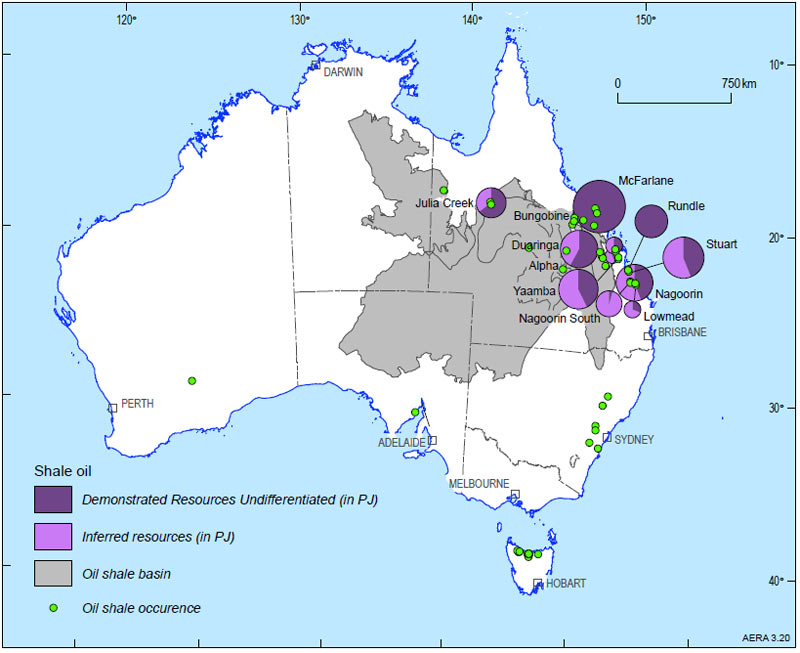Oil Shale
Page last updated:27 June 2014
Oil shale is a fine-grained sedimentary rock containing large amounts of organic matter (kerogen), which can yield substantial quantities of hydrocarbons. Oil shale is essentially a petroleum source rock which has not undergone the complete thermal maturation required to convert organic matter to oil. In addition, the further geological processes of hydrocarbon migration and accumulation which produce conventional crude oil resources trapped in subsurface reservoirs has not occurred. The unconventional shale oil resource can be transformed into liquid hydrocarbons by mining, crushing, heating, processing and refining, or by in situ heating, oil extraction and refining. One tonne of commercial grade oil shale may yield from about 100 to 200 litres (L) of oil, that is approximately a half to one barrel of shale oil per tonne of oil shale.
Australia has a large unconventional and currently non-producing identified shale oil resource of 131 600PJ (22 390mmbbl) which could potentially contribute to future oil supply if economic and environmental challenges can be overcome. The majority of Australian shale oil resources of commercial interest are located in Queensland, in the vicinity of Gladstone and Mackay. Thick Cenozoic lacustrine oil shale deposits (lamosite) of commercial interest are predominantly in a series of narrow and deep extensional basins near Gladstone and Mackay. Oil shale deposits of varying quality also occur in New South Wales, Tasmania, and Western Australia in sedimentary sequences of Permian, Cretaceous and Cenozoic age.
